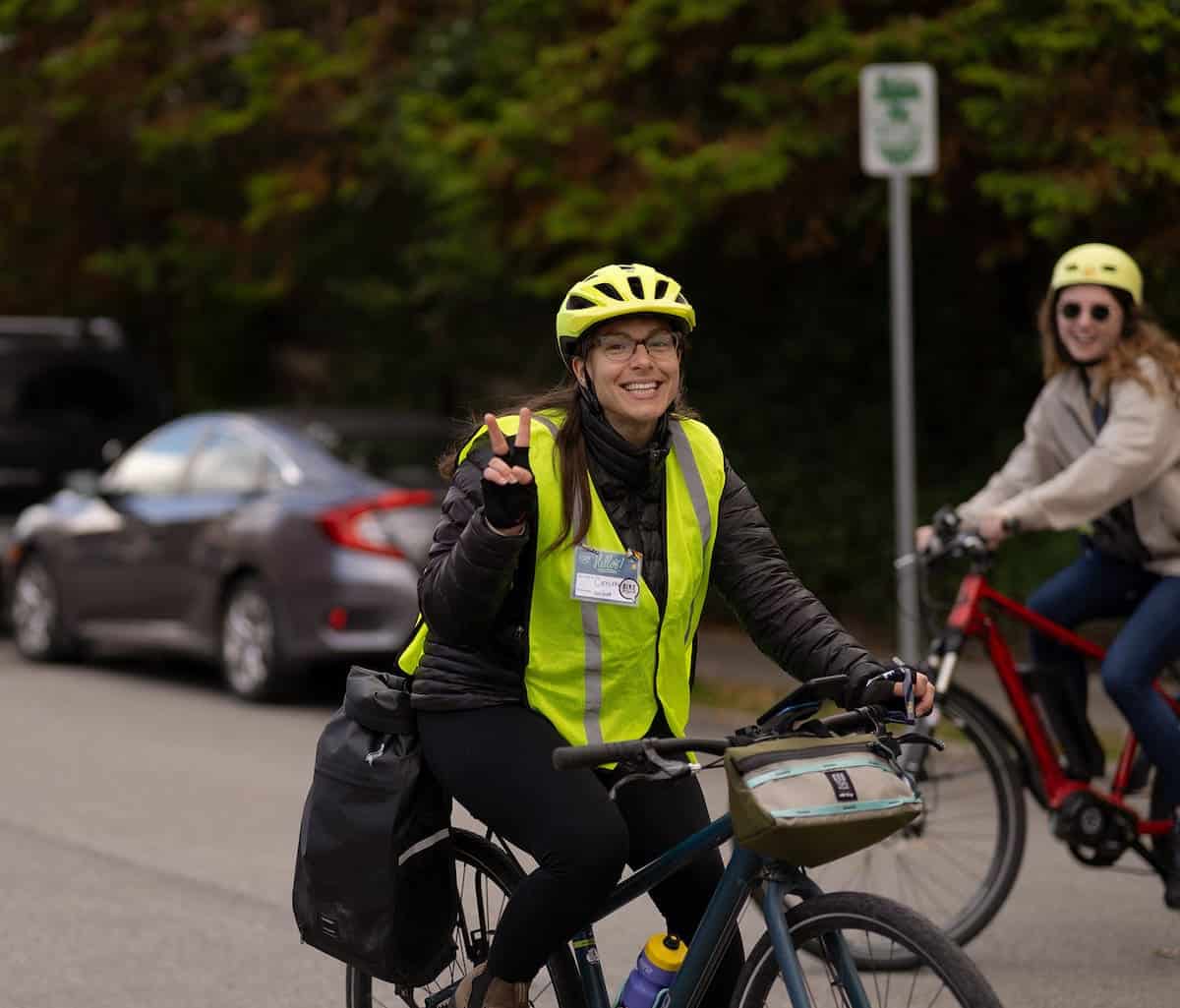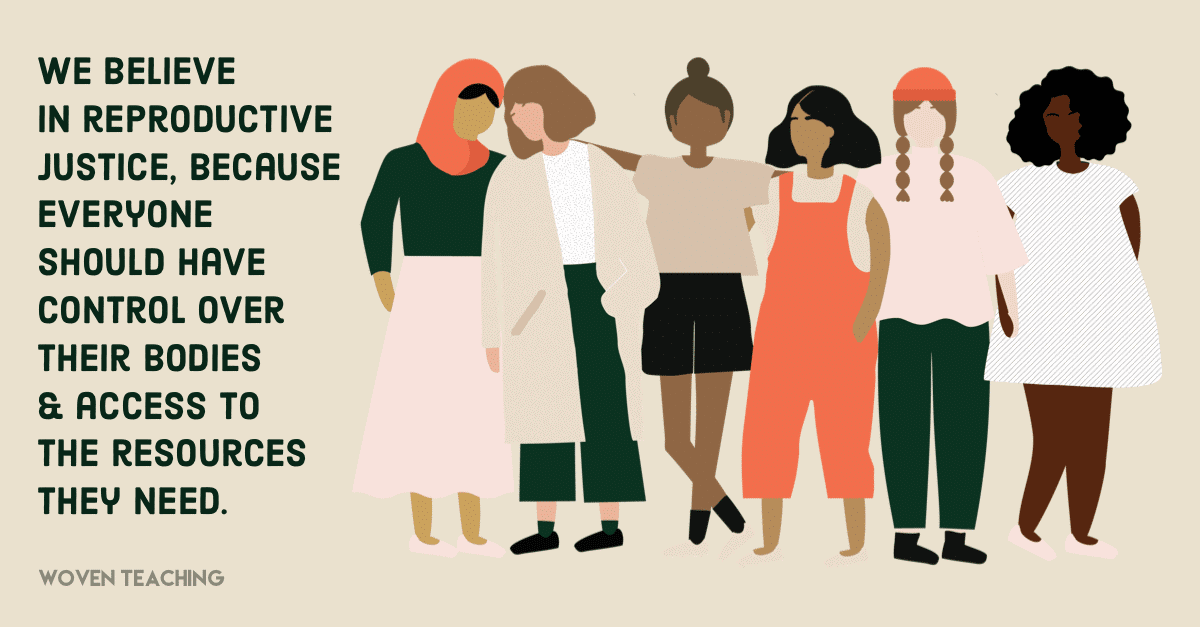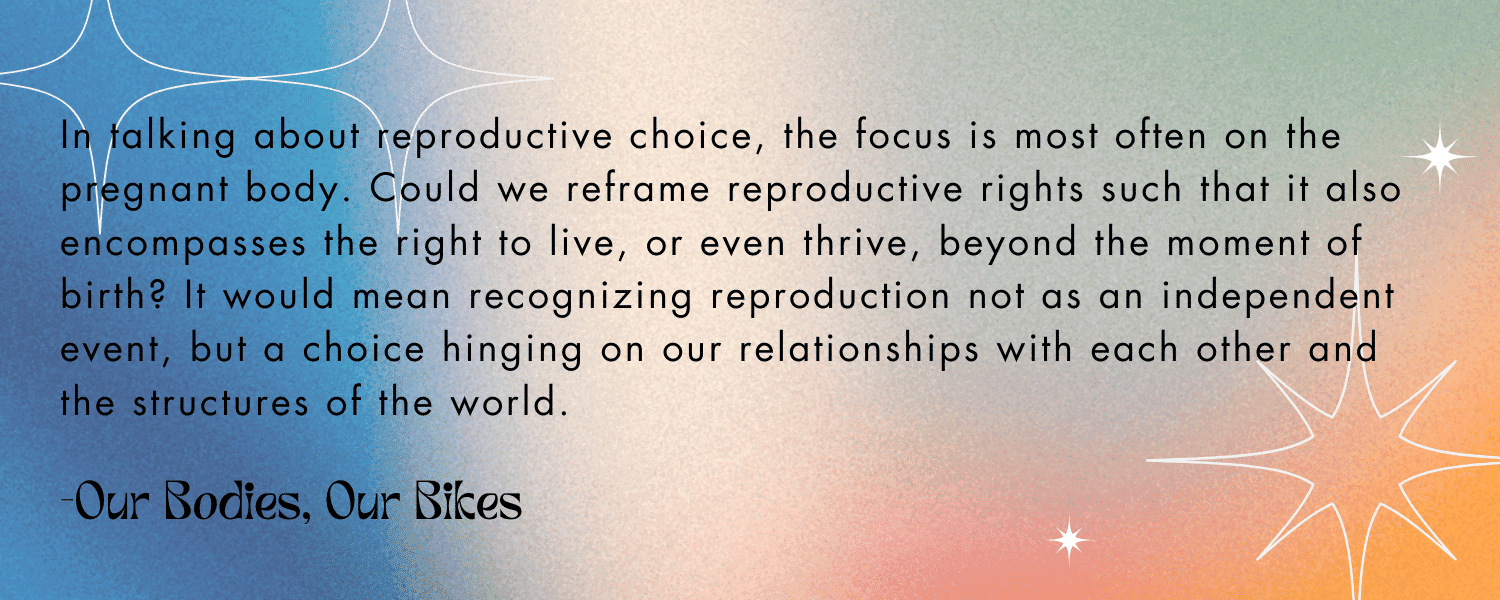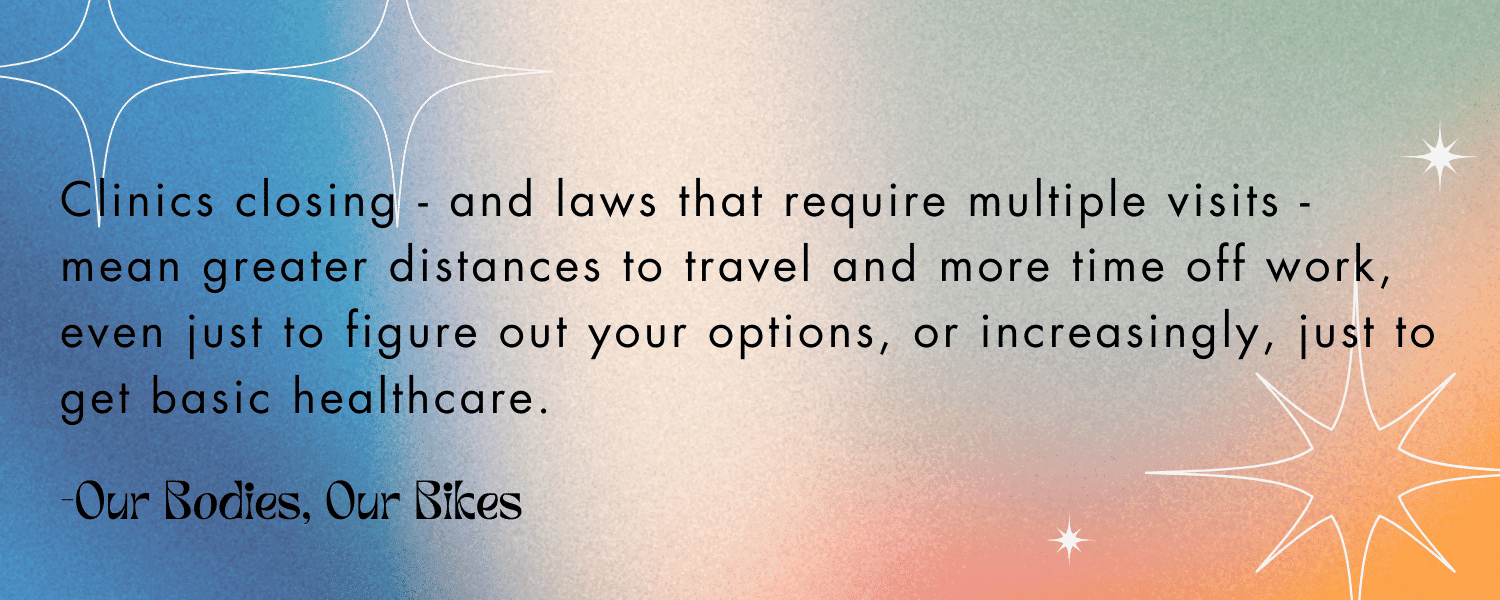
by BikePGH Staff Contributor – Catlyn Brooke
At the intersection of mobility justice and reproductive justice we find empowerment for women, trans folks, and marginalized communities.
Mobility justice and reproductive justice may seem like distinct social issues, but they are deeply interconnected in the struggle for equity and empowerment. Let us remember that bikes & cycling have long been a symbol of breaking out of the binary and fighting for women’s rights & LGBTQ+ rights, which deepens the connection between both bodily autonomy and mobility justice.
![Quoted text with colorful background:
“We knew we had to include, no matter how difficult or controversial it might prove: Reproductive Choice. What does this have to do with bicycling you might ask? [We ask] the question of what it means to be a woman, and also who gets to decide how we move our bodies through the world. One of the major ways in which this control is asserted is using the barriers already built into the landscape and social economy. The war against women [is] about our ability to move freely, unconstrained by other people’s politics and priorities.” - Our Bodies, Our Bikes](https://bikepgh.org/wp-content/uploads/2023/10/We-knew-we-had-to-include-no-matter-how-difficult-or-controversial-it-might-prove-Reproductive-Choice.-What-does-this-have-to-do-with-bicycling-you-might-ask-We-ask-the-question-of-what-it-mean.png)
In an effort to start breaking this down, let’s look at what both mobility justice and reproductive justice mean.
- Mobility Justice: Mobility justice is a vision for a world rooted in social justice where people feel safe existing on the streets and can build lives experiencing the full joy of movement regardless of their race, religion, background, or physical ability.
- Reproductive Justice: The human right to control our sexuality, our gender, our work, and our reproduction. Reproductive Justice has three core values: to maintain the right to personal bodily autonomy, have children, not have children, and parent the children we have in safe and sustainable communities.
Both of these definitions have common themes of maintaining bodily integrity in the way one moves throughout the world and the choices they make with their lives, with the added requirement of being safe while doing so.

Reproductive Rights and Safe Mobility
Looking through both the lenses of mobility & reproductive justice, safety can mean having access to reliable public transportation in all neighborhoods, for getting to and from doctor appointments and health clinics, or it can mean having a safe place for your kids to play outside and walk or ride to school away from speeding vehicular traffic.
Very rarely in the fight for social justice do issues exist in a vacuum. The word intersectionality has come to mind again and again while researching this topic. It is well known that cisgender women experience more gender-based violence than men, and in recent times transgender women experience the highest rates of violence and discrimination.
- Transgender people (16+) are victimized over four times more often than cisgender people. In 2017-2018, transgender people experienced 86.2 victimizations per 1,000 people compared to 21.7 victimizations per 1,000 people for cisgender people.
By promoting safe and inclusive transportation systems, we can create an environment where individuals can exercise their reproductive rights without fear of harm, and by extension without a fear of living their life to the fullest.
Both mobility justice and reproductive justice are working towards a community and culture where it is safe to be who we are in the world we live in. Reproductive justice is saying we have the human right to pursue what we do or don’t do with our bodies, whether we choose to affirm the gender we identify with or choose to have children or not. Mobility justice is saying we have the human right to exist and move freely and safely in our environment regardless of those choices we make.

Access to Reproductive Healthcare and Transportation
Another way that mobility justice and reproductive justice intersect is through access to healthcare, including family planning services and prenatal care. Limited access to healthcare services can lead to disparities in reproductive outcomes due to lack of adequate resources impacting folks’ ability to make informed decisions, late or not enough medical attention, and shame about one’s circumstances. Unfortunately, many marginalized communities face these challenges due to transportation-related issues. By improving public transportation systems, offering affordable alternatives, or expanding telehealth services, we can make reproductive healthcare more accessible to everyone, regardless of their geographical location or economic status.
I would be remiss if I did not mention recent restrictions on abortion access. These restrictions are often concentrated in specific regions, and can force individuals to travel long distances to access reproductive healthcare, with a disproportionate burden on low-income and marginalized communities. Mobility justice works to mitigate these burdens by advocating for policies that ensure affordable, reliable transportation options for all, including those seeking abortion services.

It’s About Liberation
SisterSong executive director Monica Simpson says that reproductive justice is “about liberation and dismantling systems of oppression that make our lives hard in this country but also that make it impossible for us to have the access and the choices that we want to have.”
We could easily say the same for mobility justice. It is about dismantling historic systems of oppression that make people’s lives harder by limiting their access to movement and safety where they live, work, learn, and play. Mobility justice is about giving people more access to all things in their communities via safe modes of transportation, including not facing discrimination or violence while walking down the street. Mobility justice is about increasing the choices people have in their lives when they aren’t hindered by built infrastructure and resources that aren’t accessible by all modes of transportation. At its core, mobility justice is about liberation.
Regardless of which fronts of justice you choose to rally on, one thing remains true, “Everyone must help ensure that justice becomes a verb in the United States.” Only by addressing these interconnected issues can we move towards a future where all individuals have the freedom to make informed choices about their reproductive health and the means to access the necessary care.
![Quoted text with colorful background:
“When we succeed, [we will get] a world in which everyone at every point in life can move freely and feel empowered rather than constrained by our connections with each other and our infrastructure.” -Our Bodies, Our Bikes](https://bikepgh.org/wp-content/uploads/2023/10/closing-horz.png)
Further Reading + Resources
Why Sustainable Transportation Advocates Need To Talk About Abortion Access
Bicycles, Gender, and Risk: Driver Behaviors When Passing Cyclists
US Cities Are Failing Their Female Cyclists
A Vision of Reproductive Justice – Sister Song
From Cyclista Zine: DIY Reproductive Health Resources
Two Chicago Moms Create Cycling Community
The History of the Bicycle as a Tool for Social Change
10th Annual Women & Non-Binary Summit Recap